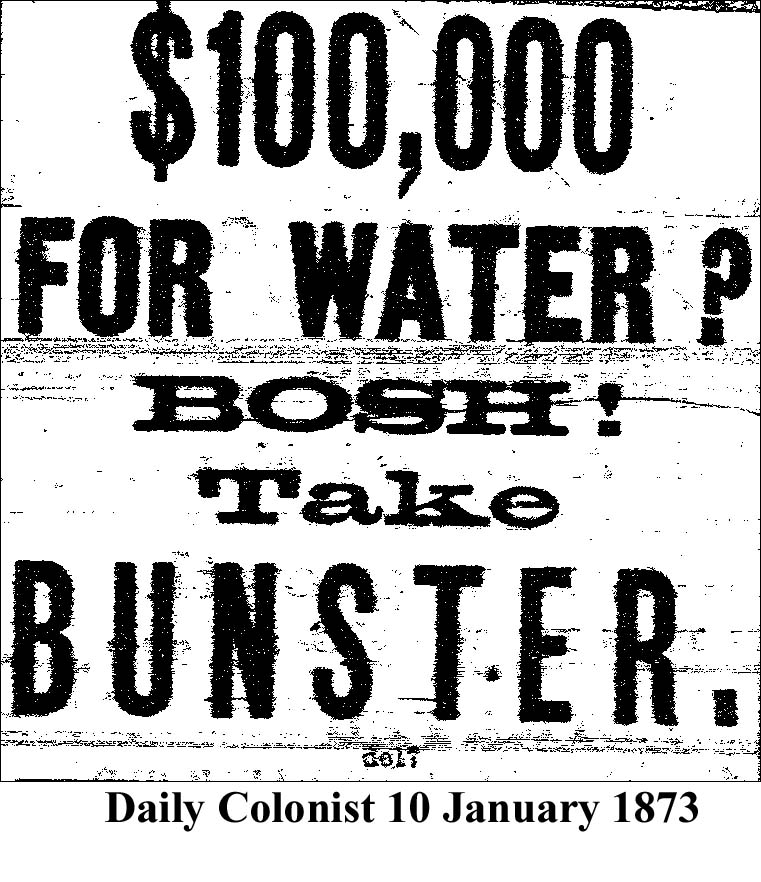
Water

The supply [of water] is not only not sufficient or good. It is decidedly bad. Offensive to the taste and smell, prejudicial to health and dangerous to the reputation of this otherwise delightful city...Bugs and water spiders in glasses, and leeches and worms and small fish in bathtubs...are palpable facts...of impure water...
-Daily Colonist, Sept. 4, 1883
Pure water is the key ingredient to quality beer. Interestingly, brewers in Victoria had some problems accessing pure water. Until 1908, when a new reservoir and filtration system was built, the water in Victoria was of questionable quality (Evans 1991, 100). Some brewers depended on the city's water mains, which meant that filtration and chemical adjustment became necessary. Many Victoria brewers tried to access other sources of water for their operations. William Steinberger built Victoria's first brewery on Swan Lake in 1858 but the poor quality of the water caused him to move his operation to a new location within its first year of existence. Other breweries, including the Lion Brewery on Spring Ridge, the James Bay Brewery, and the Halfway House utilized spring water in their operations. Due to the public's distrust of city water, this served as an excellent advertisement for their product. The Lion Brewery advertised that:
The Brewery is situated on Spring Ridge and is built over a well of pure, ever-running Spring water. This fact enables me to manufacture The Very Finest Brands Equal to any other Imperial ale, beer, or porter...
-Daily Colonist, April 22, 1885.
 It is important to note that in the brewing industry,
water quality issues revolve around the clarity and the chemistry of the water,
which can often be remedied by filtration and chemicals. The health concerns
voiced by many Victorians were not a problem in this industry because water was
boiled in the brewing process.
It is important to note that in the brewing industry,
water quality issues revolve around the clarity and the chemistry of the water,
which can often be remedied by filtration and chemicals. The health concerns
voiced by many Victorians were not a problem in this industry because water was
boiled in the brewing process.
In 1873, public concern over water quality led the government to borrow $100,000 to upgrade the water system; over the next few years, they spent $200,000 but problems continued (Evans, 1991, 100). Rather than advertising the quality of his own water, Arthur Bunster was more realistic in his advertising campaign. He used the poor quality of Victoria's water, and the public dollars going toward the upgrade, to advertise his product:
There is some reality to this campaign. One the reasons for beer's popularity over the ages has been the fact that it is boiled and pasteurized, making it safer than water.